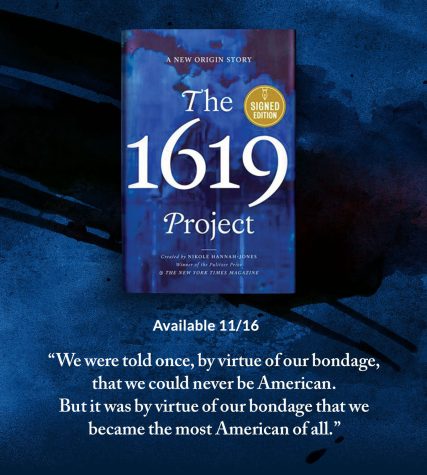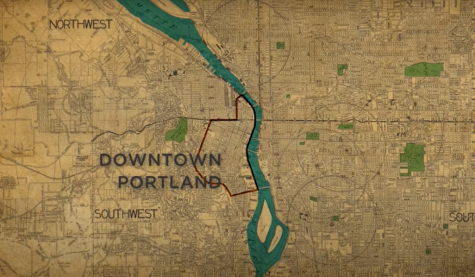
Sophie Lu is a senior at NASH. She loves reading, writing, travel, and binging The Office while eating copious amounts of purple Doritos. Outside of The Uproar, she is a member of Speech and Debate, DECA, and orchestra.
Andrew Caballero-Reynolds / AFP via Getty Images
Protesters at a rally against critical race theory in Leesburg, VA
Critical Race Theory has become a contentious point of disagreement in American discourse, but both its meaning and its prevalence are commonly misunderstood.
March 2, 2022
“It’s anti-American training that vilifies white people and demands they apologize.”
“This is about textbooks, books filled with Marxist, Communist, racially-divisive ideologies.”
“It’s basically teaching kids to hate our country and to hate each other based on race.”
Over the past few years, the subject of these quotes—critical race theory (CRT for short)—has become one of the most controversial and inciting topics in the social, political, and educational spheres. Passionate activists, both for and against, have turned school board meetings into a battleground—one they argue is for the future of education, their children, and the very soul of the nation itself. The debate has even reached North Allegheny.
CRT has become a buzzword—one that triggers almost immediate outrage and people closing themselves off to any differing opinion. Some reading this right now probably already have—as soon as they saw the title and processed those three letters, their mind was made up before reading further.
What is critical race theory?
It would seems that the answer to that question is a prerequisite for any discussion on the topic, but many engaging in the debate seem not to know.
With origins that can be traced back to the 1970s, CRT is far from a novel concept. Some of its most prominent founders include legal scholars Derrick Bell, Richard Delgado, and Kimberlé Crenshaw.
Critical race theory is an intellectual and social movement founded on several core tenets, including that race is a social construct, not a biological one, that racism in the United States is an institutional sin, not an individual one, and that people of color are uniquely qualified to speak on the effects of racism. What’s important to note is that beyond the core principles that Delgado and Jean Stefancic say are generally accepted among critical race theorists, CRT is actually a very broad field with varying beliefs among its scholars.
But when it comes to its modern implications, many (on both sides of the political aisle) use definitions that are either blatant misinterpretations (“It’s saying all white people are oppressors”) or massive oversimplifications (“It’s just teaching history”).
One common misconception is that CRT says all white people are consciously racist. Ironically, this is directly contradictory to CRT, as the misconception posits that individuals choose to be racist. In fact, CRT advances the notion that racism is systemic, that otherwise good people unconsciously benefit from privileges that have their roots in racist historical conditions.
Another misconception is that CRT is racist because it labels black people as victims who are unable to succeed on their own.
Let’s take, for instance, a track race in which one lane line is painted incorrectly, causing one runner to finish behind others. In this scenario, pointing out the disadvantage is not questioning the runner’s inherent ability or suggesting that they cannot win through their own merit—it’s a logical response to observing how a systematic bias negatively impacts a person’s ability to succeed.
Obviously, this analogy is a simplified scenario of the complexities of systemic racism and is not meant to be literally comparable. But it demonstrates that arguably the opposite is true. If systemic obstacles aren’t acknowledged, people turn to inherency to justify the differences in outcome, i.e. that a certain individual or group is intrinsically superior or inferior, which is the prime breeding ground for concepts like white supremacy, eugenics, and genocide.
A third misconception is that CRT is Marxist.
CRT is derived from critical legal studies, which is an offshoot of critical theory, which draws from Marxist ideology. But just because something is indirectly related to Marx doesn’t necessarily make it a Marxist theory any more than “sharing is caring” is a Marxist theory. Critics of CRT should be able to identify which specific principles of CRT they disagree with, not that they disagree with a person tangentially related to it. By that line of logic, would they say that American capitalism should be defined by the exploitation of slavery because some of its components can be traced back to slavery?
Here’s the thing: it would be one thing for people to disagree with the principles presupposed in CRT and posit legitimate criticisms of it just like with any other philosophy or ideology. But the issue comes from the fact that the vast majority of those crusading against CRT aren’t against CRT at all, but rather the sensationalized and oversimplified version of it that is often portrayed to the public. This quasi-CRT is usually a combination of the aforementioned misconceptions, and the media coverage of it is designed to incite outrage, not education about or understanding of what CRT actually is.
Furthermore, even if one disagreed with CRT, the issue is peripheral—there is scant evidence that CRT is being taught in elementary, middle or high schools in the nation, seeing as it’s a college-level law course.
Some argue that even if actual CRT is not taught to K-12 schoolchildren, it can be seen influencing actions in the education world, like through the implementation of equity measures. As Education Week put it, “the term ‘critical race theory’ is now cited as the basis of all diversity and inclusion efforts regardless of how much it’s actually informed those programs.”
CRT has become a political boogeyman—people aren’t entirely sure what it is, but they know they should be afraid of it, even if the threat might not actually exist at all.
At the forefront of the CRT debate are prominent pieces like The 1619 Project, the Pulitzer Prize-winning New York Times publication that reframes American history starting not in 1776, but in 1619 with the arrival of the first ship transporting slaves to the New World.
Conceived by reporter Nikole Hannah-Jones and containing a series of essays detailing how institutionalized racism has shaped everything from urban sprawl trends in real estate to medical stereotypes, The 1619 Project has drawn both praise and criticism.

Among the most notable critiques was a letter written by Princeton historian Sean Wilentz and signed by four other historians, criticizing historical inaccuracies in the writing, particularly what they postulate to be an exaggerated role of slavery in the motivations behind the American revolution. The Times responded to this letter explaining its sources and defending its original information and claims.
As black and white scholars battled, the truth became anything but. History is often anything but objective, and many of the disputes were subject to interpretation depending on which scholar analyzed them.
These potential inaccuracies may have been a critical misstep for Hannah-Jones and the Times, as they have been leveraged by detractors to discredit the entirety of the project down to its very concept. Especially because the project has created a supplementary high school curriculum based on the essays, it was an easy target for the ire of parents who are understandably concerned about their children’s education. For her part, Hannah-Jones has acknowledged the exaggerations and said she will rectify them in later publications.
But even some of its critics acknowledge the importance of the project and of broadening the scope of American history education.
“Each of us, all of us, think that the idea of the 1619 Project is fantastic. I mean, it’s just urgently needed. The idea of bringing to light not only scholarship but all sorts of things that have to do with the centrality of slavery and of racism to American history is a wonderful idea. Far from an attempt to discredit the 1619 Project, our letter is intended to help it,” Wilentz said.
The 1619 Project may not be perfect, but it is undeniably deserving of credit for its revolutionary step toward challenging the traditional confines of history education.
And this is the core of the issue surrounding CRT: the term has been used as a wide-casting net to ensnare any type of racially-inclusive history or education regardless of its relationship to CRT.
It doesn’t help that much anti-CRT legislation is intentionally written in vague and subjective terms, leaving the door open to legally for banning all racial education.
In fact, both sides of the political spectrum have been arguably too inclusive of the phrase in their defense or criticism alike, using it to characterize any sort of racial education rather than a highly specific legal theory taught in graduate-level college courses.
Many have been quick to label education like The 1619 Project a “warped view of American history,” as Oklahoma City Attorney General Mike Hunter said in an opposition letter to the U.S. Department of Education.
But history is neither one-dimensional and opposing perspectives are not necessarily mutually exclusive. The same story may be told in very different ways depending on who is telling it—and they can be simultaneously valid.
Just as when one looks at a cube head-on, they remain blind to the majority of it, students must be presented with different angles in order to truly understand the nuance of complex historical events and the sentiments that drove them.
Some who argue against racially-inclusive education are concerned about sowing feelings of guilt into white people. But save for the most radical viewpoints, close to no one is arguing that individual white people ought to feel responsible for atrocities that occurred hundreds of years before them. What the vast majority of proponents of racially inclusive education are asking is that we as a society collectively recognize how institutionalized racism has shaped the Black American experience, from slavery to sharecropping to redlining, and presented a unique set of obstacles that require rectifying.
That is, of course, not to say that there is not also a history of marginalization for other groups. However, no group in the United States has been as institutionally or systemically oppressed, surpassing in both magnitude and longevity, as Black Americans. While it is absolutely possible for white people to be underprivileged, it is extremely rare that these disadvantages are the direct result of a history of discriminatory policies made on the basis of race.
Take redlining, the discriminatory practice of segmenting housing and denying financial services on a racial basis, for example. Redlining was officially outlawed in 1968, though there is evidence that it continued beyond then. My parents were born in 1968. That means that there are plenty of American teenagers whose parents or, more likely, grandparents experienced redlining, plenty of adults who were born into a household affected by redlining, and plenty of evidence it still affects people today.

Thus, it seems naive to believe that systemic inequalities that existed for centuries were erased a mere two generations ago, that a society where racism was ingrained into the social and political foundations of daily life for hundreds of years would be able to easily wash its hands of it. Yet the fight over how history should be taught rages on.
One has to wonder if those who resist counter-normative perspectives will ever realize they are warring against a threat of their own creation, or are now so committed to their views that they are content to hack a strawman to death.
_____________________________________________________________________________________
Editors’ note: All opinions expressed on The Uproar are a reflection solely of the beliefs of the bylined author and not the journalism program at NASH. We continue to welcome school-appropriate comments and guest articles.

Sophie Lu is a senior at NASH. She loves reading, writing, travel, and binging The Office while eating copious amounts of purple Doritos. Outside of The Uproar, she is a member of Speech and Debate, DECA, and orchestra.